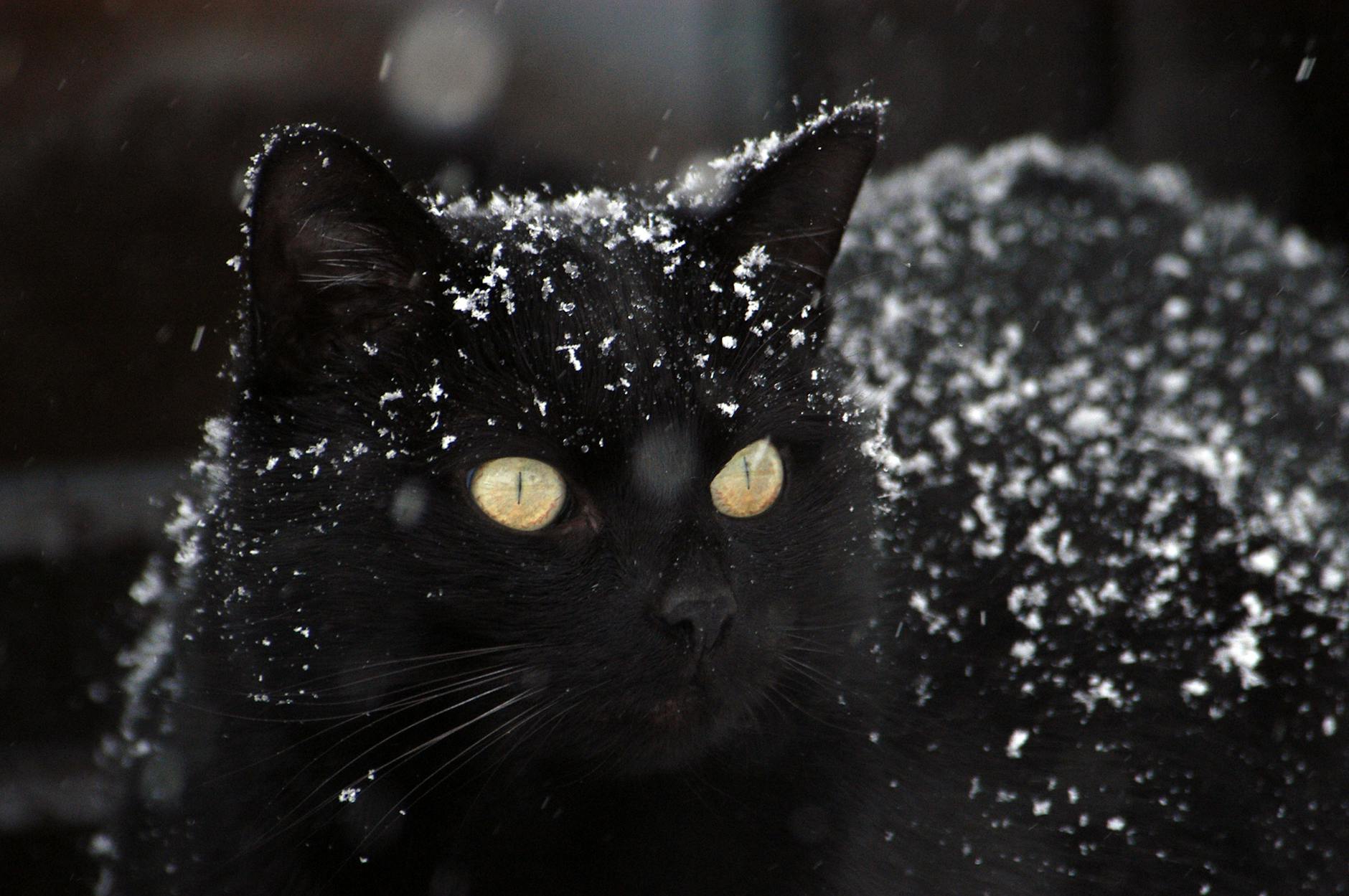How You Can Help Keep Community Cats Safe During Winter

Updated: 1/8/21
The Humane Society of the United States estimates that there are tens of millions of feral cats in United States. Most of the time, these feral or “community” cats take care of themselves. Thanks to their efficient survival skills of scavenging and hunting, outdoor cats are often well suited to survival in a variety of climates, locations, and conditions. But that doesn’t mean they don’t need our help. When it comes to winter, things get much more difficult for these cats.
Here are a few things you can do to help the feral cats in your community.
Provide Food and Water
While cats are pretty excellent at providing for themselves, they need extra calories and fat during the cold winter months to keep up their energy and weight. PetMD suggests a dry kitten food as a way to get the feral cats their extra calories and balanced nutrition. Providing dry food to feral cats during the winter is fairly simple; providing fresh, clean water and wet food is another matter! These are especially prone to freezing and being rendered inedible by the cats in need.
Feed and water stations should be placed as near to the shelter as possible and protected from the cold and weather elements as well. Food containers can be placed inside the shelter, but water should be left outside to avoid spills. If the area is prone to freezing, place water or canned food in a deep, wide container, preferably plastic, to help minimize freezing. Heated bowls may be an option for keeping wet food and water from freezing over.
Provide Shelter
Sure, cats have their thick, fluffy coats to help keep warm – but they need shelter to keep them dry and warm and out of the elements. Providing community cats with shelters during the winter is a great way to help them escape the snow and wind chill.
Constructing your own shelter can be relatively easy, and animal rescue organizations have provided plenty of options for building inexpensive cat shelters.
Here is a simple example from Alley Cat Allies!

When it comes to building your own cat shelter, they don’t need to be overly big or complicated. It can be as simple as an insulated cardboard box or even a plastic storage bin! In bigger cat shelters, heat disperses more quickly. The ideal size is about two feet by three feet, at least big enough to accommodate roughly three to five cats. The smaller the shelter and the closer the cats, the easier it is for the box to stay warm.
It’s also important to use proper insulation materials to help trap as much heat as possible. In climates with extreme cold, it might be necessary to line the shelters with Mylar blankets. But generally, less expensive insulation materials are available. Avoid using blankets, towels, and hay as insulators. Straw (which is actually different from hay—who knew?) is an ideal insulator, as it is loose, dry, and doesn’t readily absorb and hold moisture. Blankets, towels, and hay are not ideal as they easily draw in moisture and can freeze, but also grow mildew and mold which can cause illness.
For more in-depth DIY cat shelter ideas, you can check out Alley Cat Allies or Neighborhood Cats for excellent tutorials and suggestions!



















We used a small, cheap styrofoam cooler. Taped the lid on, turned it upside down, carved out a small doorway and put straw in it. Cat lived in it for two years. Loved his house.
Hi I live in an area where cats roam free. I was wondering if there was a way to make a cold house for summer? Thank You!!!!
Thank you for posting how to make the insulated outdoor winter homes for feral and stray cats during the winter. I feed the ones in my area year round and even have a heated water bowl for them during the winter. Now l can give them a warm place, especially for the nights when no animal should be left outside when the temperature gets in the signal digits and lower.
Thank you for this information and the pictures of the shelters.
You guys do realise wild cats are still a thing. Not all feral cats are just abandoned house cats. If you’re going to take in a feral cat don’t just keep it copped up in a house please. Cats have instincts they’re built to hunt and scavenge. Let your cats outside from time to time. And if it runs away hey maybe it didn’t want to be domesticated in the first place.
Leave a comment